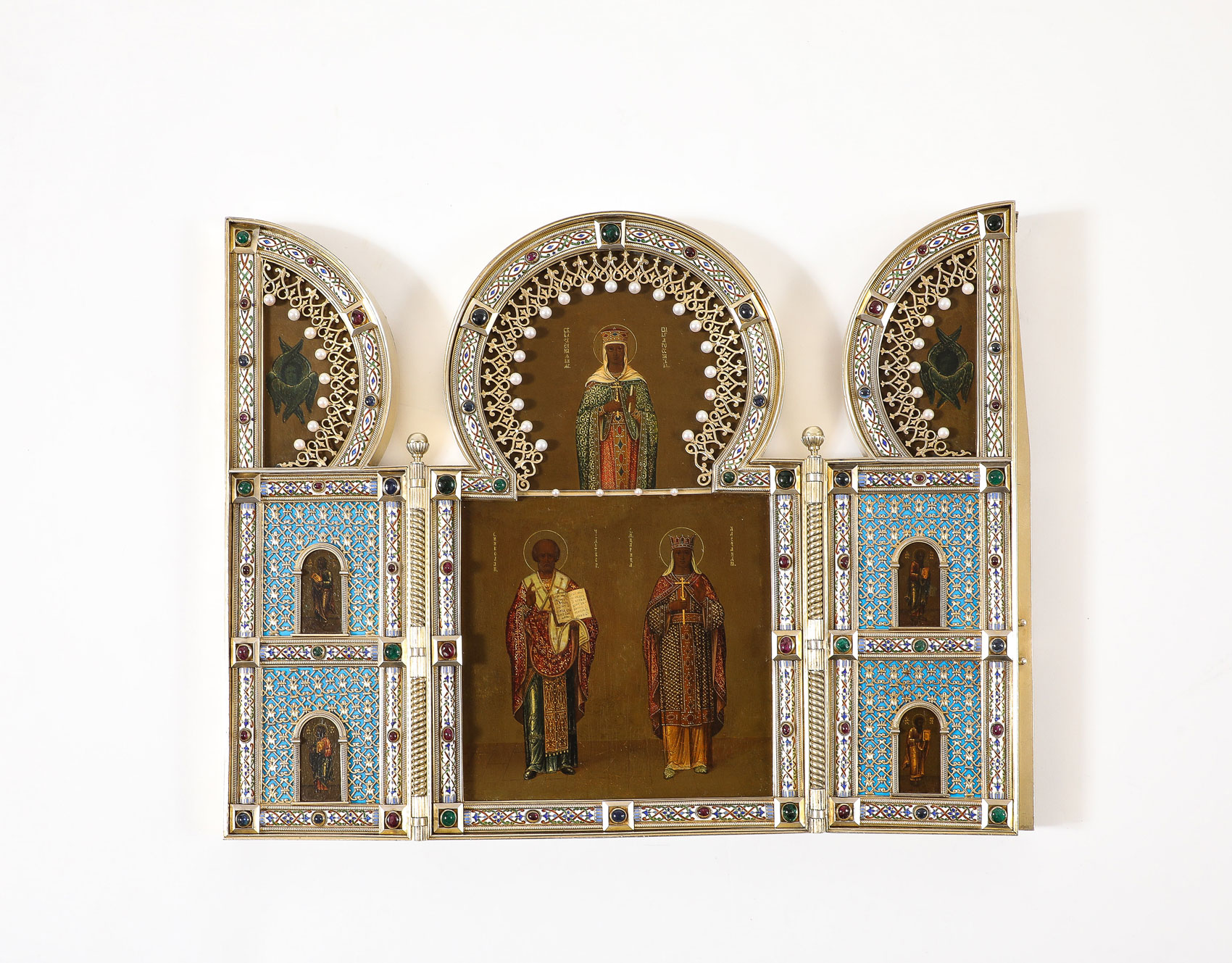The Louvre Unveils Fabergé Triptych with Romanov Family Provenance
Recently acquired for $2.5 million, it mirrors the grandeur of the Russian workshop’s famous imperial Easter eggs.

Last month, the Louvre temporarily unveiled an important acquisition for its new Department for Byzantine and Eastern Christian Art: a triptych created by celebrated Fabergé master artist and craftsman Mikhail Perkhin (1860-1903)—and an important artifact of Russia’s Romanov dynasty. The painted wood icon was originally a gift from members of St. Petersburg’s aristocracy to Nicholas II and Alexandra that honored the birth of the couple’s first child, Grand Duchess Olga, in 1895.
As many world history buffs will recall, the emperor, empress and their five children would famously meet a tragic end in 1918.

“In the 1920s and 1930s The Bolsheviks were actively selling off imperial works of art from the former Romanov dynasty,” explains Mark Schaffer, principal at New York’s A La Vieille Russie, which recently sold the triptych to the Société des Amis du Louvre for $2.5 million.
Schaffer says his grandfather, Alexander Schaffer, of Schaffer Galleries in New York, and A La Vieille Russie (which was established in Kyiv in 1851 and based Paris at the time of the Communist Revolution before moving to its current home in NYC), would have purchased the triptych directly from the Russian government-sanctioned office known as Antiquariat.

“The Soviets wanted to rid the State of vestiges of the former imperial regime, to raise funds for their new government, and to further their suppression of religion by selling icons,” Schaffer adds. “Only a few people were allowed to purchase from this dedicated office.”
While a wide range of Fabergé works with Romanov associations from that era occasionally pop up for sale, the icon now residing in the Louvre is exceptional given its connection to the Nicolas II and Alexandra imperial line—and the haunting mystique that surrounds the family’s fate.
Meanwhile, the Louvre’s decision to acquire the icon was informed by its art historical attributes and significance: “This imperial triptych is a magnificent object equivalent in luxury to the French goldsmithing of the reign of Napoleon III,” says Sébastien Fumaroli, deputy director of the Société des Amis du Louvre. The “masterpiece of Art Nouveau style” also aligns with the intent of the Louvre’s new Department for Byzantine and Eastern Christian Art and its director, Maximilien Durand, “to be able to illustrate all regions of icon art production, from the 8th until the 19th century,” Fumaroli adds. Adding the object’s unique significance was the fact that its date—1895—surpasses the usual periods presented in the Louvre’s collections, which generally do not extend beyond 1848.
Echoing the splendor of a Fabergé imperial Easter egg, the triptych depicts a gathering of saints draped in sumptuous robes. A layer of ornate gold lattice adorns a light blue background, while Art Nouveau arabesques emphasize the architectural structure of the object. Reflecting the silhouette of a Russian Orthodox church, the body of the piece is made of Karelian birchwood, a material often used in Russian decorative arts of the late 19th century because of its buttery hue and shimmering surface. The icon’s richest details are rendered in lustrous silver gilt, goldwork, and enamel alongside pearls, emeralds, rubies and sapphires in an extravaganza of textures and shine.

The triptych will be installed as a central feature of the Department for Byzantine and Eastern Christian Art in the Louvre‘s Denon wing when the department opens officially in 2027.
The chance to view such a unique and compelling relic of the Art Nouveau era will likely be worth the wait. As Fumaroli says, “The precious stone ornamentation of our triptych makes it a real jewel that will, we hope, crown the new department dedicated to the icon.”